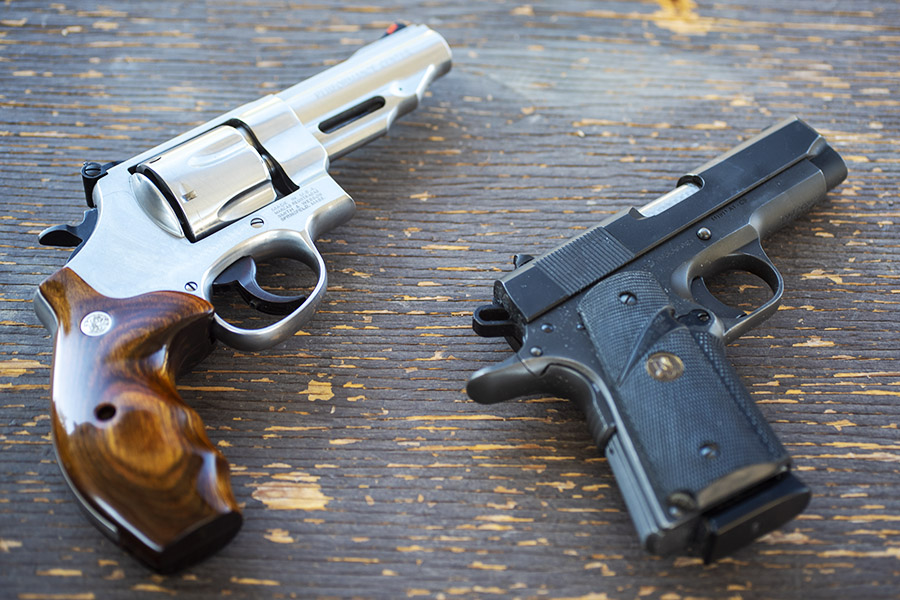A couple of weeks ago I tested three .45 ACP loads in a Model 625 Smith and Wesson and my Rock Island Armory Compact 1911 using Winchester’s 231 powder and Jim Gardner’s 230-grain cast roundnose bullets. We’ve done a bunch of accuracy testing in both .45 ACP revolvers and autos with other loads (and you can find those stories here). This blog focuses specifically on Jim’s 230-grain roundnose bullets with Winchester 231 propellant.
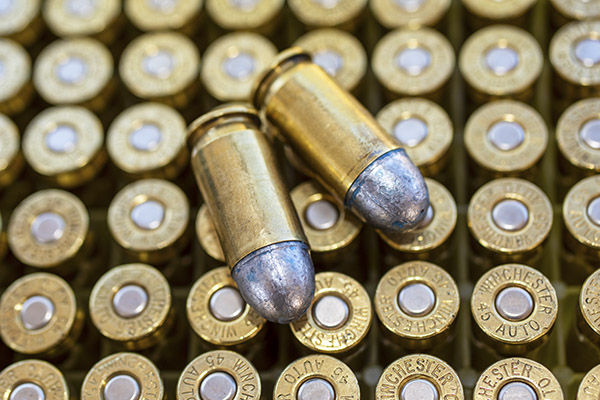
To get to the point quickly, the Gardner 230-grain cast roundnose bullets did well (as you’ll see below). My testing consisted of three .45 loads with 4.5, 5.0, and 5.6 grains of WW 231 powder:
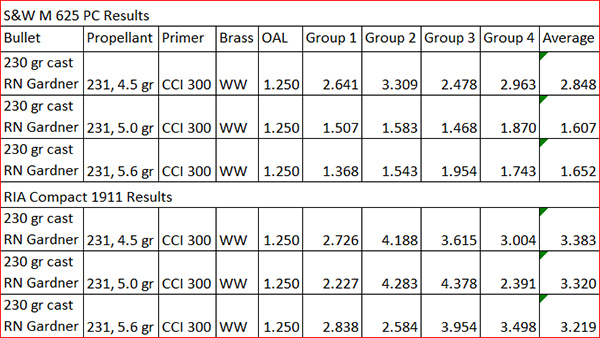
I was checking for accuracy and functionality in both guns. Here’s what I found:
-
- The Compact 1911 likes 5.0 grains of 231, and that load functioned best with this powder in the automatic. The slide locked back after the last round the way it is supposed to; it would not do so with 5.6 grains of 231. Getting a short-barreled 1911 to function well is a bit tougher than a full-sized 1911. With 5.0 grains of 231 and the 230-grain cast bullets, my Compact 1911 functions reliably. Your mileage may vary.
- 4.5 grains of 231 functioned okay in the 1911, too, but it is the least accurate load in both the 1911 and the Model 625 (of the three loads that I tested).
- The Model 625 likes both 5.0 and 5.6 grains of 231, with a slight accuracy edge going to the 5.0-grain load (although what you see here is probably more a result of my skills than anything else). The 625 is not as accurate with the lighter 4.5-grain 231 load.
Lyman’s reloading manual has 5.8 grains of 231 as the accuracy load with this bullet, but I didn’t go that high (it was a max load). Like I said, it doesn’t function reliably in the Compact 1911, and my testing showed 5.0 grains to be the Model 625’s sweet spot from an accuracy perspective.
All shots were at 50 feet, and all loads used the Lee factory crimp die (which assures easy chambering in 1917-style revolvers). The loads would do better from a machine rest or a steadier shooter. It was hot out on the range the morning I fired these targets and that probably adversely affected accuracy, too.
Here are the Compact 1911 targets that I shot using the 5.0-grain 231 load:

The Compact 1911 is not a target gun, but it is accurate enough for its intended purpose. The Rock Compact 1911 is very concealable and it’s the handgun I carry most often. They are surprisingly inexpensive and surprisingly accurate with the right loads.
These are the targets with the Model 625 and 5.6 grains of 231:
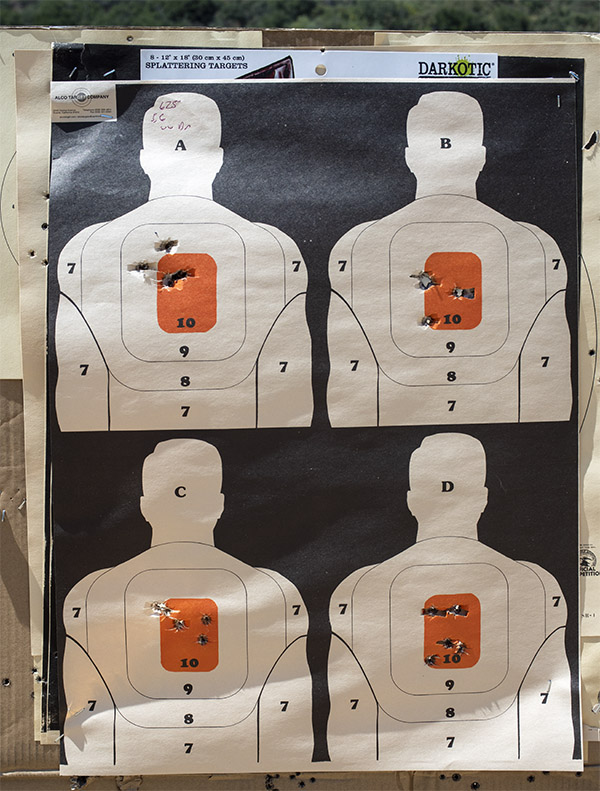
The Model 625 Smith and Wesson is more accurate than the Compact 1911 (hey, no surprises there). They are both fun guns to shoot.
I usually load .45 ACP ammo with either Unique or Bullseye powder, but I thought I would try 231 just because I had some on hand and I wanted to see how it would do. I have an accuracy load for the Compact 1911 with Bullseye and a 185-grain bullet that we wrote about earlier. Other guys tell me 231 is their preferred .45 ACP propellant and I still had a can of it that I had purchased for the 9mm cast bullet comparo some time ago, so I thought I would give it a try in the two guns featured here. With the sketchy availability of reloading components during these uncertain times, it’s good to know that this powder works well in .45 ACP. But after this test, I’m going to stick with the other two propellants (Unique and Bullseye), assuming I can get them. What I didn’t like about 231 is that it is a sooty powder…I found it to be significantly worse in that regard than Unique.
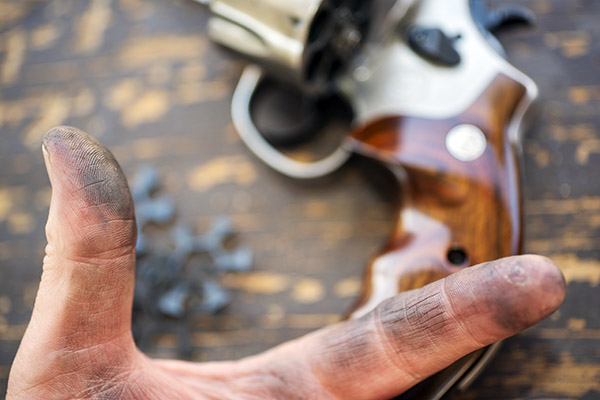
I’ve been real happy with Gardner’s bullets. They are less expensive than other cast bullets, the accuracy is good, and I observed no leading in either handgun. I’ll be purchasing Gardner bullets again. If you haven’t tried Jim’s bullets, you might give them a try.
More Tales of the Gun, 1911, 1917, bolt action sporter, milsurp, load data, and other good shooting and reloading posts are here!
Join our Facebook ExNotes group!
Never miss an ExNotes blog…get a free subscription here:

